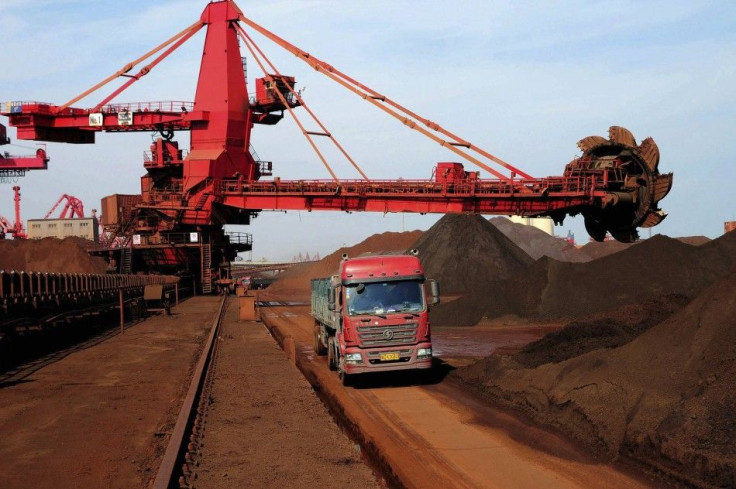Global Markets Overview – Morning December 3, 2014

Long-term headwinds catching up with Australia
2015 is gearing up to be the stress test of the Australian economy for the millennium.
Although the GFC was the worst economic situation globally since the great depression, Australia managed to weather this event due to its balance of trade, the commodities boom and a governmental surplus form the previous few years. Most economists and world banks believe global growth will accelerate in 2015, with the US the main driver. Australia is now facing growth drags from the same areas that saved it during the GFC.
2015 will see the economy facing the lagging impact of the commodity slump, rapid declines in mining investment and further waves of fiscal consolidation. Concurrently, there are likely to be tightening financial conditions and lower levels of housing investment - factors that had previously offset the slump.
The Reverse Bank of Australia (RBA) continues to forecast below-trend growth. The current expectation is for Australia's economic growth to average a meagre 2.0% next year, which gives weight to the idea that fiscal and monetary policy makers should shift their attention to gross national income considering the state of play.
However, despite this outlook for 2015, all but one major economists see rates moving in 2015, and judging by the statement from the RBAyesterday it agrees with the majority. The statement can be summarised as follows:
Inflation is well inside the key 2-to-3% range (oil will help this even more). Unemployment will remain high (and likely to head higher). Wage growth is flat. Credit growth is moderate at best.
The most important part of the statement was that balanced growth won't occur without the AUD returning to historical norms. Yet, 'on present indications, the most prudent course is likely to be a period of stability in interest rates.'
2015 is therefore likely to follow 2014 and see no movement in rates at all based on the communiques from the RBA. However, the market is suggesting a 50% chance of a 25 basis-point cut in 2015 and I tend to agree with that assumption.
2015 will be a tough year for the ASX. EPS growth looks like it will be severely affected by the downturn in commodities, while defensives and banking stocks look either fully valued or will embark on fiscal 'streamlining' to drive EPS growth, as seen in 2014. Coupled with micro pressure, macro influence may hit the banks as increased capital requirements are placed on them or if macro-prudential impacts also come into play.
Also, most of the market remains in favour of USD exposure, as do I. However, using Australian assets to gain exposure unfortunately looks fully valued - the likes of CSL are now asking for too much of a premium for the USD exposure. More than ever, 2015 will make the ASX a stock picker's market; therefore I recommend being nimble and alert to changes in the market.
Ahead of the Australian open
Based on the moves in the futures markets overnight, we are calling the ASX up five points to 5286. Material and energy plays snapped backyesterday after the savageness of Friday and Monday's trading sessions. I believe we are in for another snap back in the other direction as oil fell again overnight and iron ore declined, although the movement is unlikely to be as brutal as in the past few days.
Australia Q3 GDP is due to be released at 11:30am AEDT. Estimates see year-on-year growth of 3.1% with quarter-on-quarter at 0.7%. GDP is backward-looking and, to get a true sense of the country's standing, you will need to drill into the underlying numbers - where I believe you will see a weakness in 2015 emerging.
Asian markets opening call | Price at 8:00am AEDT | Change from the Offical market close | Percentage Change |
Australia 200 cash (ASX 200) | 5,286.70 | 5 | 0.10% |
Japan 225 (Nikkei) | 17,762.00 | 99 | 0.56% |
Hong Kong HS 50 cash (Hang Seng) | 23,736.20 | 82 | 0.35% |
China H-shares cash | 11,201.40 | 76 | 0.68% |
Singapore Blue Chip cash (MSCI Singapore) | 374.31 | 0 | 0.11% |
US and Europe Market Calls | Price at 8:00am AEDT | Change Since Australian Market Close | Percentage Change |
WALL STREET (cash) (Dow) | 17,877.50 | 93 | 0.52% |
US 500 (cash) (S&P) | 2,065.82 | 12 | 0.62% |
UK FTSE (cash) | 6,749.50 | 86 | 1.31% |
German DAX (cash) | 9,957.70 | -9 | -0.09% |
Futures Markets | Price at 8:00am AEDT | Change Since Australian Market Close | Percentage Change |
Dow Jones Futures (December) | 17,865.50 | 92.50 | 0.52% |
S&P Futures (December) | 2,065.13 | 12.25 | 0.60% |
ASX SPI Futures (December) | 5,293.00 | 2.50 | 0.05% |
NKY 225 Futures (December) | 17,777.50 | 135.00 | 0.77% |
Key inputs for the upcoming Australian trading session (Change are from 16:00 AEDT) | Price at 8:00am AEDT | Change Since Australian Market Close | Percentage Change |
AUD/USD | $0.8448 | -0.0057 | -0.66% |
USD/JPY | ¥119.275 | 0.820 | 0.69% |
Rio Tinto Plc (London) | £29.63 | 0.07 | 0.22% |
BHP Billiton Plc (London) | £15.38 | 0.54 | 3.61% |
BHP Billiton Ltd. ADR (US) (AUD) | $30.25 | -0.15 | -0.49% |
Gold (spot) | $1,200.10 | -4.60 | -0.38% |
Brent Crude (January) | $70.73 | -1.36 | -1.88% |
Aluminium (London) | 1978 | -53.00 | -2.61% |
Copper (London) | 6418 | -32.00 | -0.50% |
Nickel (London) | 16300 | -12.00 | -0.07% |
Zinc (London) | 2212 | -23.50 | -1.05% |
Iron Ore (62%Fe Qingdao) | $70.67 | -0.44 | -0.62% |
[Kick off your trading day with our newsletter]
More from IBT Markets:
Follow us on Facebook
Follow us on Twitter
Subscribe to get this delivered to your inbox daily






